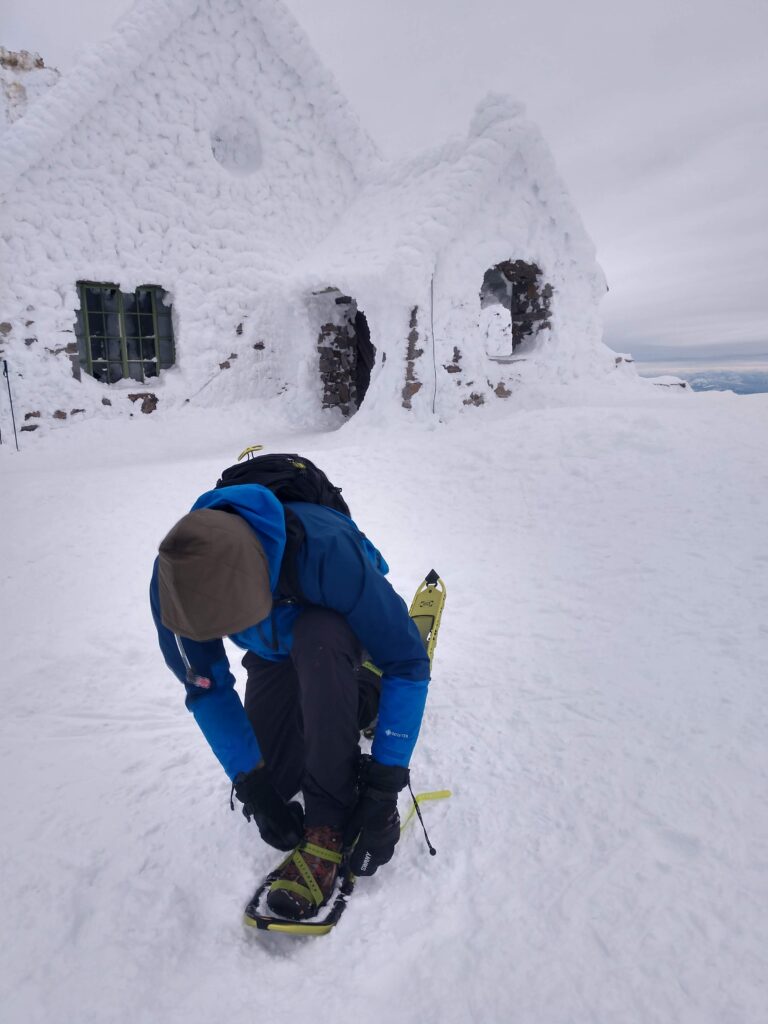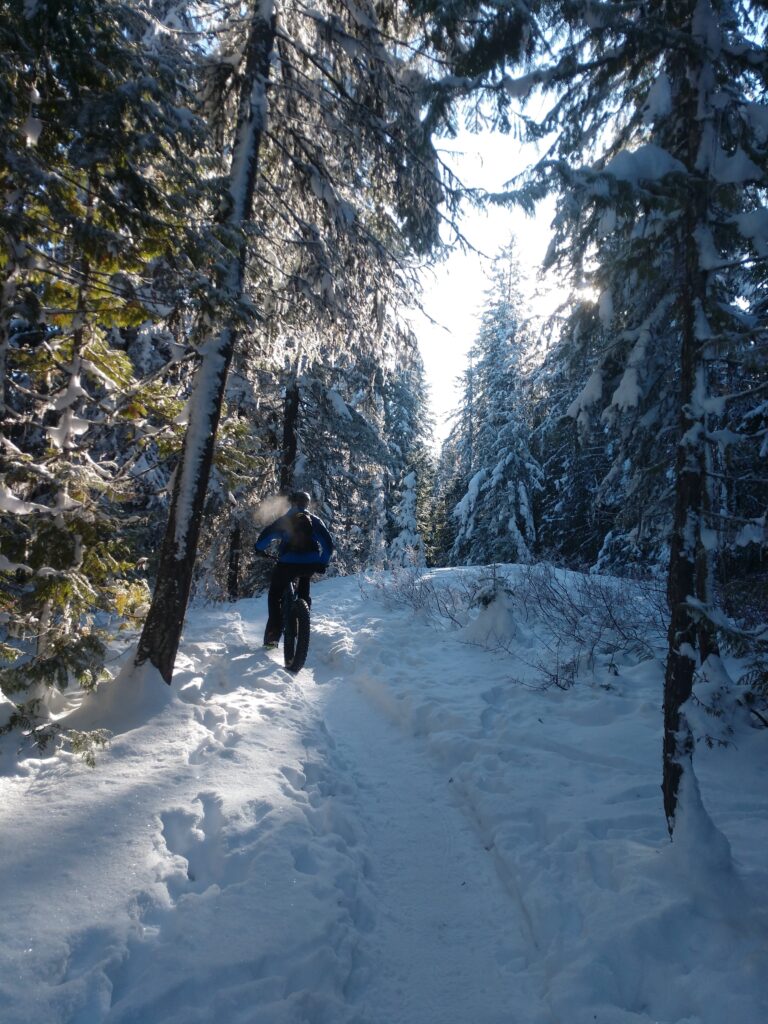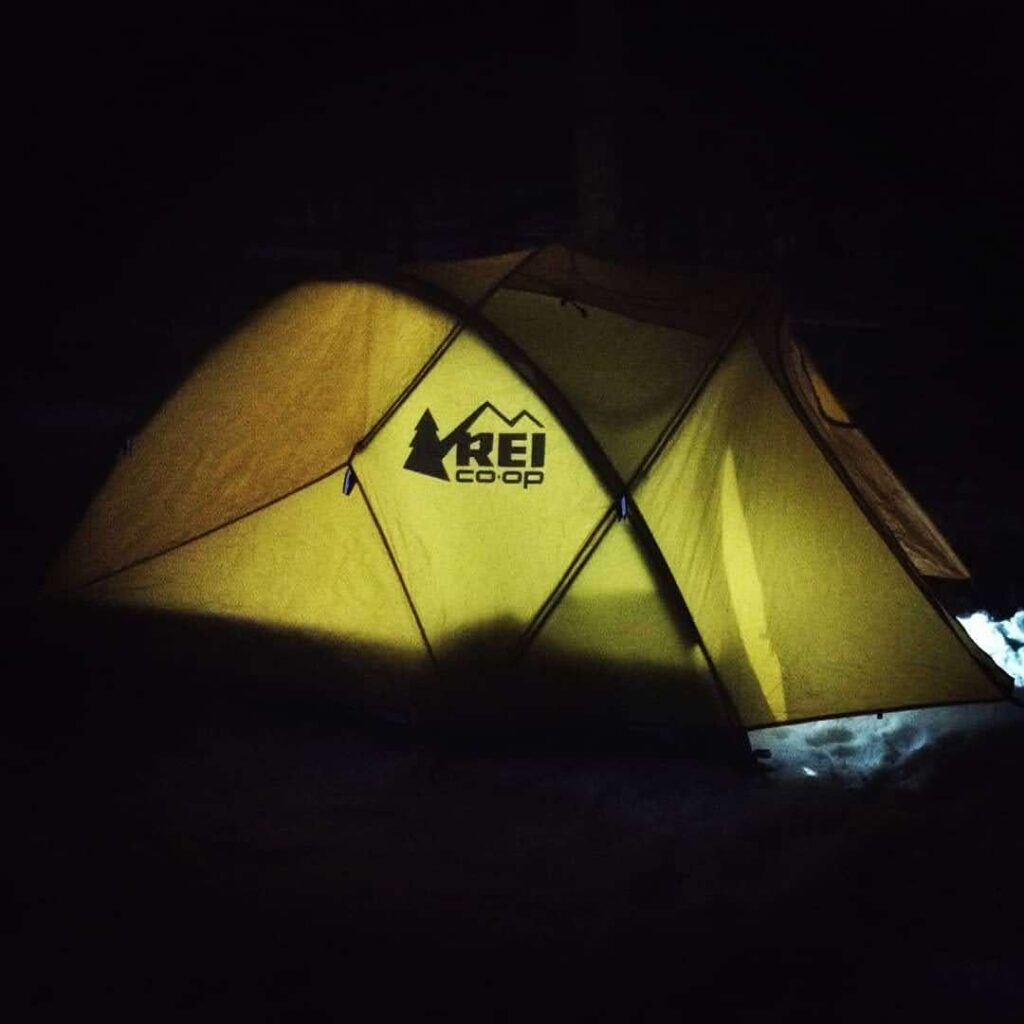Tips for getting outside and making the most of the cold, snowy months
By Carol Corbin
I live in the Inland Northwest . . . and I don’t ski. I think there are about five of us non-skiers in the region. We’re like unicorns. Or Yeti, if Yeti hated being cold and was averse to strapping frictionless sticks on his feet and careening down hills at break-neck speeds. I love being outdoors and am intentional about building that into my life year-round, but, despite living in Spokane for 17 years, my twice-used snowboard molders away in the basement, couched in memories of greenish-yellow bruises and unceremonious flailings out of chairlifts.
It’s no secret that recreating outdoors in the winter comes with its own set of challenges. Limited hours of daylight, frigid temperatures, snow, wind, icy trails, cold and flu season, and the seasonal gloomies can all add up and make it tough to just get out the front door. But, get outside we must, sometimes, for sanity. Here are a few things I’ve found that get me from October to May without losing my marbles.

GO SNOWSHOEING
I’ve always heard that if you can walk, you can snowshoe. That being said, the very first step I took on a pair of snowshoes, I stepped on the back of my right shoe with my left foot and abruptly crashed into the nearest snowbank. Thankfully, snow is forgiving, and I immediately learned that when you fall on snowshoes, it’s easiest to get back up if you roll onto your knees first.
Snowshoeing is a relatively low-barrier activity. You need a solid pair of hiking or snow boots, a good three-layer clothing system (moisture wicking next to the skin, insulating mid-layer, and wind/water/weatherproof top layer), and maybe some poles, and you’re set. If you don’t want to spring for your own pair of snowshoes until you know if you’ll like it, you can rent them from many local outdoor gear shops like REI and Rambleraven in Spokane. Spokane Public Libraries offers snowshoes in their “Library of Things” too. Increasingly, ski resorts offer snowshoe rentals as well.
For a beginner-friendly route with scenic views, I recommend Hauser Conservation Area, located north of Spokane Valley, between Newman and Hauser Lakes. This loop trail of just over a mile features lovely forest land, very little elevation gain, and views of Hauser Lake. Parking is free and does not require a pass. More information about the area can be found on the Spokane County Conservation Futures website.
Another nearby snowshoe adventure can be found at Round Lake State Park in Sagle, Idaho. There is a parking fee of $7 for Idaho residents and $14 for out-of-state drivers. The 1.8-mile Trapper’s Trail leads around the lake and is open to hikers and snowshoers. The longer, 2.5-mile Outer Loop Trail is open to hikers, fat bikers, snowshoers, and skiers.

TAKE A SPIN ON A FAT BIKE
My first and truest outdoor love is biking. A firm believer in the “N+1 = the right number of bikes” formula, I bought a fat bike in spring of 2018. My Salsa Mukluk does it all, albeit slowly, and has been a go-to for slow mountain biking, even slower bikepacking, and glacial (pun intended) snow biking. The irony that in order to keep my feet warm while biking in the winter I choose to wear army surplus mukluks (for their sturdy canvas shell and cozy felt liner), while pedaling a Mukluk has only now dawned on me. Fat biking has seen an explosion in popularity, and therefore the trail infrastructure has evolved to support it. It’s a great time to test the trails on these fun big wheelers. Pack provisions like food, water, and handwarmers.
Ski Resort Trails & Bike Demos: Ski resorts like 49 Degrees North boast mixed Nordic/snowshoe/fat bike trail systems so that if, like me, you find yourself in a relationship with someone who skis or snowboards, you can still have fun in the snow while they’re careening down hills, trying not to break themselves. These facilities will often host fat bike demo days during the winter, so if you’re “fattie curious,” you can try before you buy. Locally, Mojo Cyclery has a fleet of rental fat bikes also.
Take a Fattie Road Trip North of the Border: Rossland, B.C., boasts a thriving fat biking community with regular grooming weeks before the downhill resorts are even open. The team at Revolution Cycles will rent you a bike, give you the rundown of the trails, and, if you’re there on the right day, introduce you to the lead groomer. If you like climbing, you can even park in town, hop on your fat bike, and pedal up to the groomed trails! In typical Canada bike fashion, though, you’ll be riding either up or down a hill. I’m pretty sure Canadians don’t understand “flat.”
Miles of Groomed Fat Bike Trails at Spokane’s Riverside State Park: If you haven’t met Frank Benish out on the trails in Spokane’s Riverside State Park, well, you just don’t go out there enough. Frank spends most of his winter on a groomer, dialing in fat bike-friendly trails out of the Deep Creek, Wilbur, and Marchand Trailheads in the park. Because of the heavy user traffic in the Park, it can be difficult to maintain good fat bike tracks, and educating other users about how to properly care for groomed trails is a challenge. If you get out there after a good grooming run, however, the trails are magnificent! Beginner-friendly loops with limited elevation gain bring out the best in every rider. Discover Passes are required at all Riverside State Park trailheads.
Sandpoint’s Fat Bike Mecca: Pine Street Woods in Sandpoint has been snowy since the beginning of November this season. There are about six miles of groomed trails with beginner-friendly routes from the Pine Street Woods parking area, with more advanced single-track from the VTT Trailhead. There are two bike shops in Sandpoint offering fat bike rentals this season—Syringa Cyclery and Greasy Fingers Bikes N Repair. Looking to explore the trails with others? Pend Oreille Pedalers will be leading group rides this winter. More information can be found on the trail group’s Instagram and Facebook pages, @pendoreillepedalers.

TRY WINTER CAMPING
If you’re like me and can only go for a certain period of time without sleeping in a tent before you start to feel like you don’t know who you are anymore, there is always winter camping. And even though winter camping is not for the faint of heart, it is possible and can even be fun. . . in its own way. When planning your first night of winter camping, I suggest keeping it local, with a solid exit strategy. Not, say, driving a hundred miles into the central Oregon wilderness, hiking eight miles on snowshoes in frigid temperatures, and then tucking in to bed, anticipating 18 inches of snow in the morning. (Not that I would have done that. It just seems like something someone might do.)
Where to Go Snow Camping: Members of the Spokane Mountaineers can snow camp at the Mountaineers’ Chalet at Mount Spokane. Be advised, the rest of the mountain is closed to camping in the winter. The Chalet is a great option, if you’re a member, since there is a ready exit strategy in, well, picking up your sleeping bag and going inside. And the sky views at night are well worth the trip.
Fishtrap Recreation Area west of Spokane in the Channeled Scablands is another beginner-friendly winter camping destination. As with many areas managed by the Bureau of Land Management, dispersed camping is allowed year-round. There are no amenities in this area, though, so plan to pack in all your food, water, and means for using “the facilities.” Also plan to pack out all your trash.
Winter Camping Gear: If you aren’t already equipped with the necessary warm, high-insulation, and waterproof or water-resistant winter apparel and winter-worthy camping gear, it can be hard to find rentals appropriate to the occasion, but Eastern Washington University and the University of Idaho outdoor programs offer mountaineering and camping gear. You can also buy the gear you need new at outdoor gear shops or find quality used items at Rambleraven in Spokane. Don’t skimp on a warm, weather-resistant tent, insulated sleeping pad, and a nice, warm sleeping bag rated for well-below freezing. You could be in it for 12 hours or more since there’s not much else to do in the winter once the sun goes down.
The Inland Northwest is an amazing place to live, and having all four seasons is one of the things that makes it great. There’s nothing like fresh-fallen snow on a bluebird day! So, even if you don’t ski or snowboard, you can find ways to enjoy (or at least survive) being outdoors all year long.
Carol has been exploring the woods, trails, and rivers of the Inland Northwest for the last 17 years. Working for Inland Northwest Land Conservancy helps her pursue her personal mission of getting more people outside for nature’s physical and mental health benefits.













